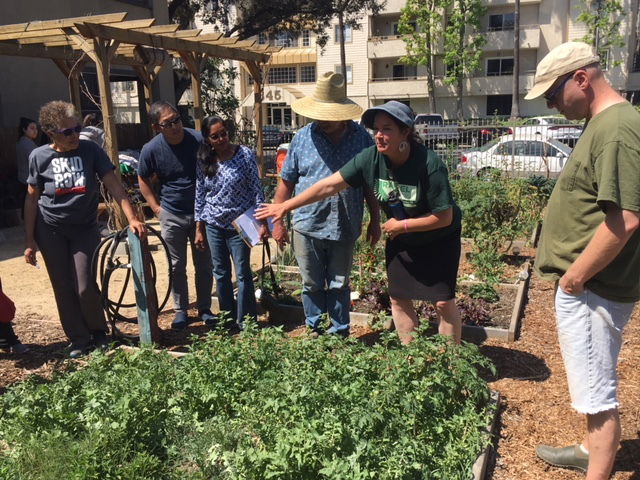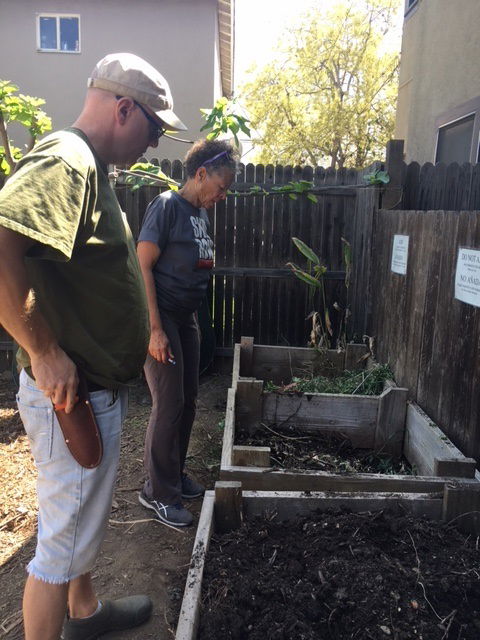LBO Workshop: Put Life Into Soil
As gardeners, we tend to focus on the plants growing above the surface. But what’s happening below is even more important.
 Rachel Bruhnke demonstrates the benefits of healthy soilAt Saturday’s soil-building workshop at Long Beach Organic’s 7th and Chestnut Community Garden, master gardener Rachel Bruhnke stressed the importance of putting life into soil, both before and after planting.
Rachel Bruhnke demonstrates the benefits of healthy soilAt Saturday’s soil-building workshop at Long Beach Organic’s 7th and Chestnut Community Garden, master gardener Rachel Bruhnke stressed the importance of putting life into soil, both before and after planting.
“The most important thing you can do is add nutrients into the soil,” said Bruhnke, who got her introduction to agriculture while serving in the Peace Corps in Honduras. “Wherever you have a plot, trust the sun and grow food. We need to be reclaiming our power.”
When she bought her property in San Pedro seven years ago, it was the yard, not the house, that most attracted her. She called her place Harbor Farms. “Something told me I should start taking care of myself, so I started growing food, she said.
Organic matter—in the form of manure, compost, bone meal, peat moss, or woody material—loosens up the soil and helps retain water and nutrients. It helps to know whether your soil is clay, sandy, or loamy. Clay soil will be tightly packed. Sandy soil will sift through your fingers. And loamy soil, which is most desired, will compact into a spongey ball when you squeeze it in your hand.
 Compost is key to healthy soilIt’s a good idea to prepare the soil before planting with manure and compost. Horse, chicken, or steer manure is a good source of nitrogen, although it can burn seedlings if it’s too “hot.” Compost can be purchased or made yourself by maintaining an aged pile of dry stalks from vegetables, leaves, kitchen waste, and even shredded junk mail.
Compost is key to healthy soilIt’s a good idea to prepare the soil before planting with manure and compost. Horse, chicken, or steer manure is a good source of nitrogen, although it can burn seedlings if it’s too “hot.” Compost can be purchased or made yourself by maintaining an aged pile of dry stalks from vegetables, leaves, kitchen waste, and even shredded junk mail.
Leaving roots in the ground while pulling up plants can add organic matter, as can winter cover crops. One trick that Bruhnke said works well to attract worms is placing watermelon rinds below the surface. The worms aren’t so much attracted to the rind itself as to the microbes living on the watermelon rind.
Worms, which help break up the soil, won’t like heat. To keep them cool in the summer, Bruhnke recommends placing a thin layer of straw on top of the soil.
Commercial fertilizers help increase potassium, phosphorus, and nitrogen in the soil. But there are also natural ways. Planting legumes adds nitrogen to the soil. Burying banana peels generates potassium. And adding compost increases phosphorus, said Bruhnke, who works as a high school environmental engineering teacher.
The workshop was one in an occasional series sponsored by Long Beach Organic at their community gardens. The classes are free, however donations to LBO are always appreciated.
- Margo McCall